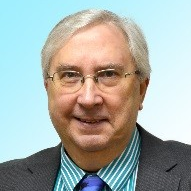Ultrafast Vortex Pulses
A special issue of Applied Sciences (ISSN 2076-3417). This special issue belongs to the section "Optics and Lasers".
Deadline for manuscript submissions: closed (30 June 2020) | Viewed by 14210
Special Issue Editors
Interests: fundamental molecular photonics and energy transport; optomechanical forces and nonlinear optical phenomena
Special Issues, Collections and Topics in MDPI journals
Interests: nondiffracting beams; beam shaping; wavefront sensing; microoptics,; nanooptics,; structured light; orbital angular momentum; ultrashort pulse applications
Special Issue Information
Dear Colleagues,
Currently, there is a boom in studies on “twisted light”, accompanied by exciting new developments in quantum optics, fiber optics, microscopy, quantum informatics, and optical communication. With the commercial availability of ultrashort-pulsed light sources, a particular branch of this field of research has now moved into sharp focus. Ultrafast vortex pulses combine the rotational degrees of freedom of orbital angular momentum and/or spin angular momentum with the specific features of ultrashort pulses, such as temporal localization, high peak intensities, and large spectral bandwidths. The application of vortex-shaped wave-packets holds numerous kinds of promise: to provide an improved understanding of the dynamics of atomic and molecular processes, to enable the generation of unprecedented short flashes of light, to facilitate the exploitation of enhanced selectivity in interactions with material having chiral properties, to provide a means for massively parallel optical data transfer, or to furnish advanced approaches for the ultrafast excitation of magnetic materials. Our Special Edition is intended to cover the full spectrum of such activities, ranging from basic theory, over advanced methods for formation and detection, through to very recent applications of ultrafast singular optics, such as attosecond pulse generation, high-resolution imaging, and fast optical information processing. Particular emphasis will be placed on array-specific problems like self-imaging, adaptive optical methods of structured beam shaping and characterization, and the emerging capabilities of super-resolution techniques in the spatial and temporal domain.
Prof. Dr. David Andrews
Dr. Ruediger Grunwald
Guest Editors
Manuscript Submission Information
Manuscripts should be submitted online at www.mdpi.com by registering and logging in to this website. Once you are registered, click here to go to the submission form. Manuscripts can be submitted until the deadline. All submissions that pass pre-check are peer-reviewed. Accepted papers will be published continuously in the journal (as soon as accepted) and will be listed together on the special issue website. Research articles, review articles as well as short communications are invited. For planned papers, a title and short abstract (about 100 words) can be sent to the Editorial Office for announcement on this website.
Submitted manuscripts should not have been published previously, nor be under consideration for publication elsewhere (except conference proceedings papers). All manuscripts are thoroughly refereed through a single-blind peer-review process. A guide for authors and other relevant information for submission of manuscripts is available on the Instructions for Authors page. Applied Sciences is an international peer-reviewed open access semimonthly journal published by MDPI.
Please visit the Instructions for Authors page before submitting a manuscript. The Article Processing Charge (APC) for publication in this open access journal is 2400 CHF (Swiss Francs). Submitted papers should be well formatted and use good English. Authors may use MDPI's English editing service prior to publication or during author revisions.
Keywords
- Vortex beams
- ultrashort pulses
- orbital angular momentum (OAM)
- vector beams
- spiral phase
- chirality
- optical helicity
- ultrafast singular optics
- vortex beam arrays
- vortex detection
- vortex plasmons
- fiber optics
- atmospheric propagation






